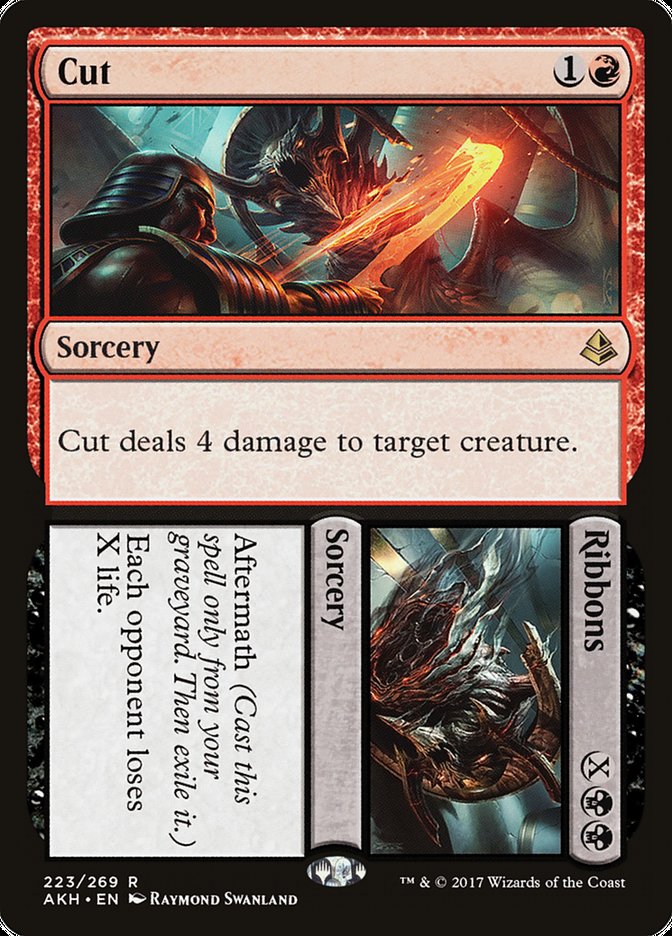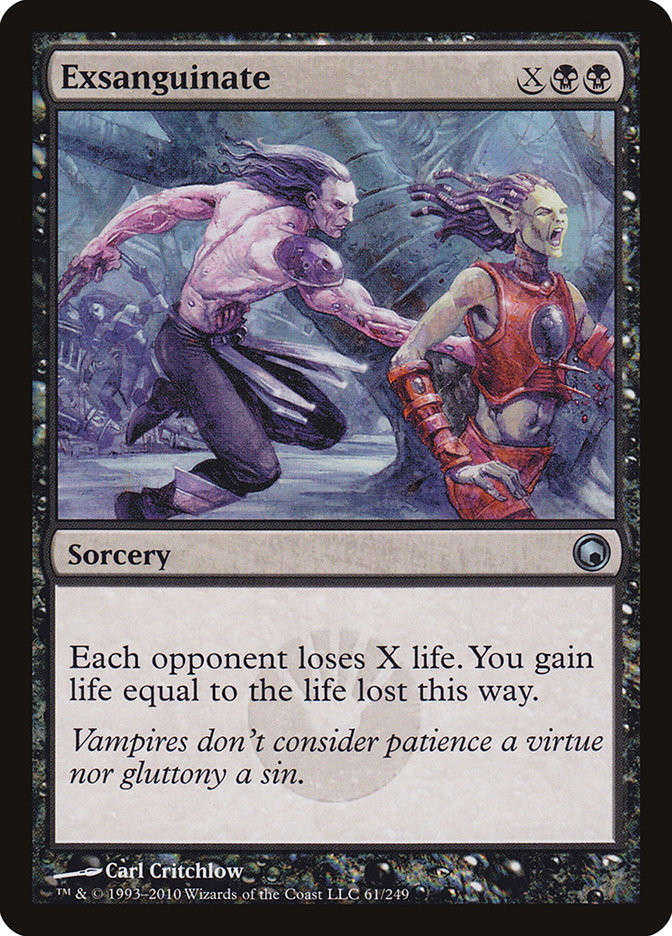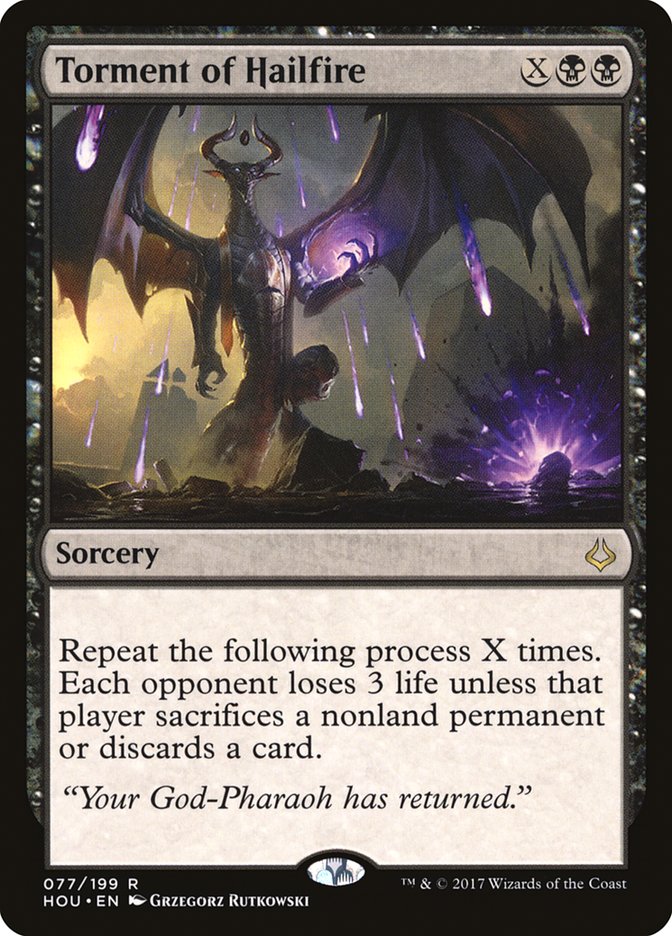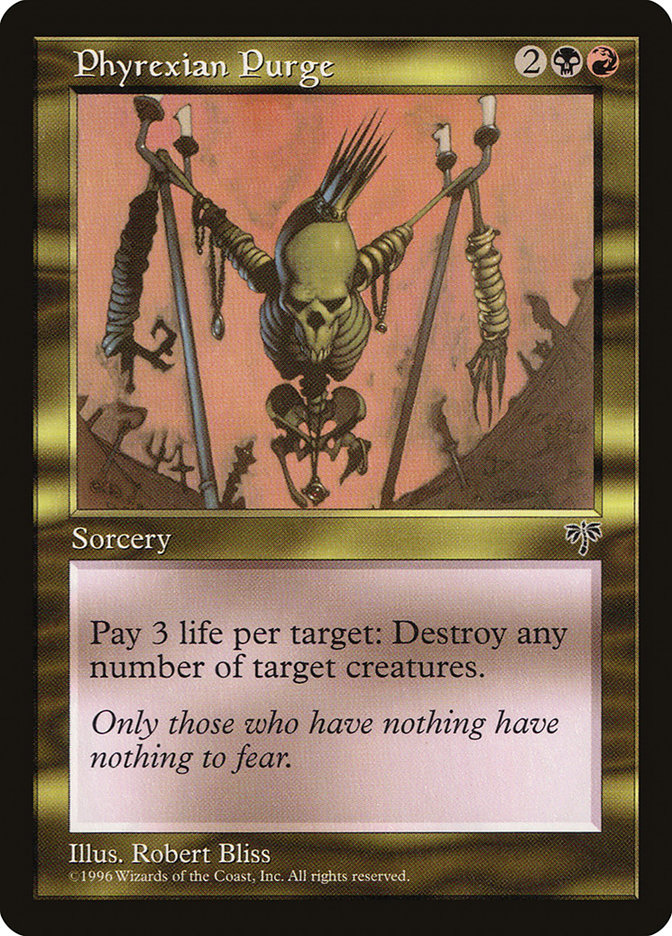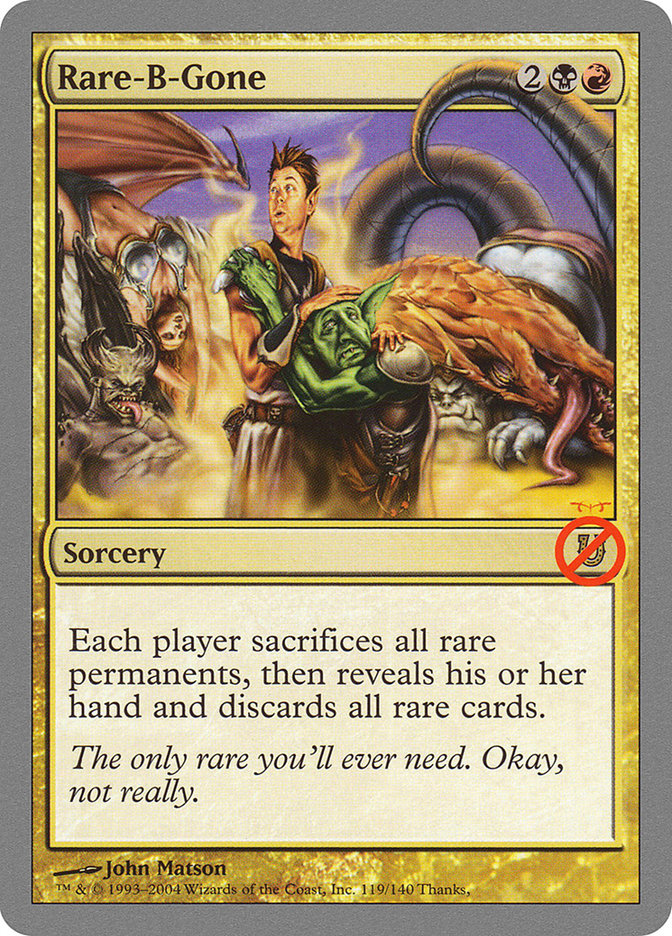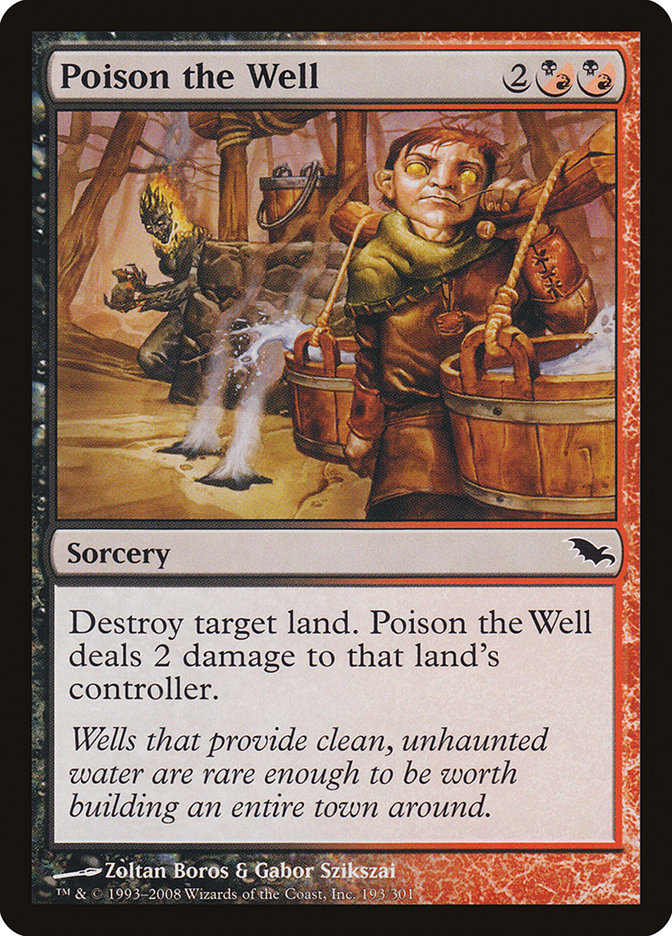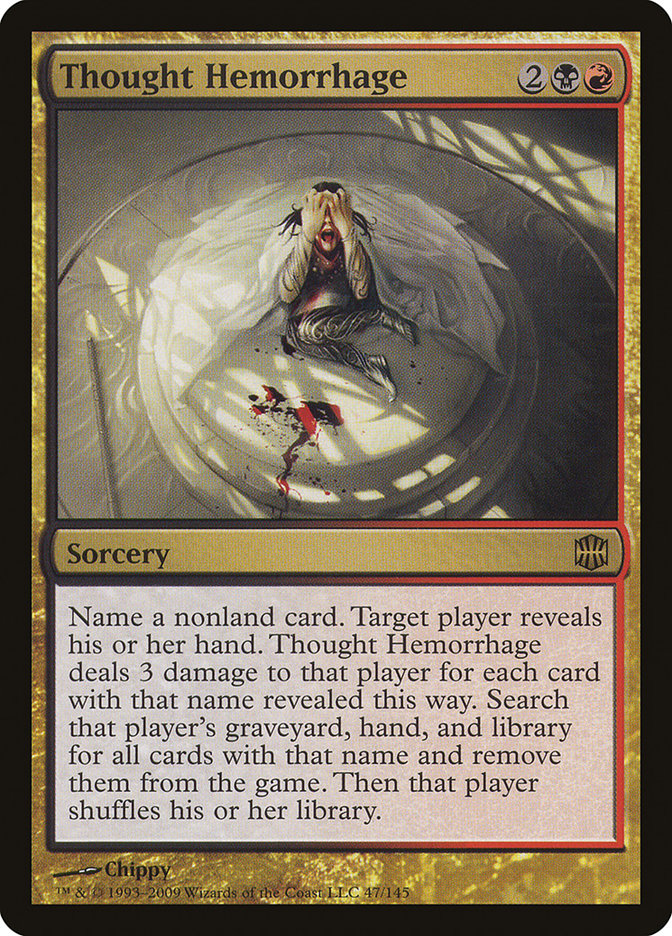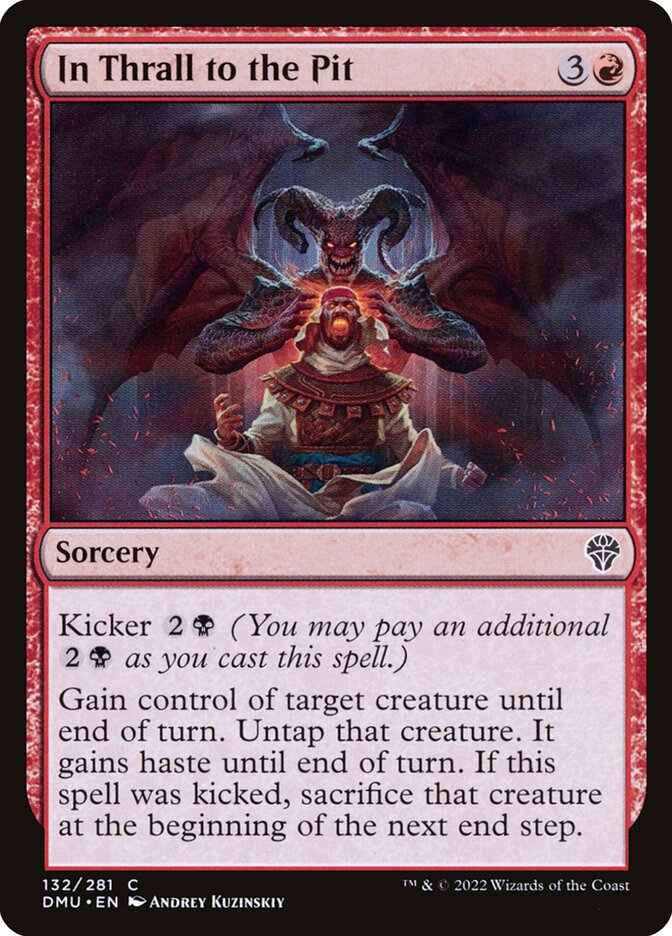Cortar // Trozos Carta MTG
| Colecciones da carta | Lanzado en 5 coleccionesVer todos |
| El coste de maná | |
| Costo de maná convertido | 4 |
| Rareza | Extraña |
| Tipo | Conjuro |
| Habilidades | Aftermath |
Texto de la carta
Secuela. (Lanza este hechizo solo desde tu cementerio. Luego exílialo.) Cada oponente pierde X vidas.
Cartas como Cortar // Trozos
Delving into Ribbons, an intriguing finisher option in MTG, players can draw parallels to similar menacing cards designed to deplete an opponent’s life total. A notable comparison is with Exsanguinate, a card that drains life from each opponent and bolsters the caster’s life in direct proportion to the mana invested into its X cost. Unlike Ribbons, which requires setup in the graveyard through its aftermath ability, Exsanguinate can be a stand-alone threat at any game stage.
Another card worth mentioning in the same realm is Torment of Hailfire, presenting an escalating threat where opponents must choose between losing life, discarding cards, or sacrificing nonland permanents. The flexibility and potential for a massive swing make it a strong alternative to Ribbons, albeit at a higher base mana cost. Torment of Hailfire offers a more immediate impact compared to the strategic setup Ribbons demands for a damaging finale.
Choosing between these options hinges on the strategic direction of a deck; Ribbons offers sneaky endgame potential and value from the graveyard, while other cards like Exsanguinate and Torment of Hailfire act as upfront, high-impact plays. Each boasts its own merit in the complex tapestry of MTG’s diverse strategy.
Cartas similares a Cortar // Trozos por color, tipo y coste de maná
Card Pros
Card Advantage: Ribbons grants players the ability to pull ahead in the game by offering a method to draw additional cards. This plays a key role in outpacing opponents as you access more of your deck’s resources.
Resource Acceleration: The card efficiently accelerates your resource pool, providing a means to potentially deploy more spells or bigger threats earlier than usual. This can be pivotal in shifting the game’s momentum in your favor.
Instant Speed: The versatility of Ribbons being cast at instant speed means that you have the flexibility to respond to an opponent’s actions on their turn or to simply end your turn with a surprise. This strategic element keeps opponents guessing and gives you an edge in timing your plays.
Card Cons
Discard Requirement: One potential downside of Ribbons is the requirement to discard a card to activate its abilities. This could be a setback when your hand is already depleted or when each card in hand is crucial for your strategy.
Specific Mana Cost: The card demands a specific combination of mana colors, which could pose deck-building constraints. This particular demand can hinder the card’s flexibility, particularly in formats where mana bases are less consistent.
Comparatively High Mana Cost: Ribbons comes with a high mana investment compared to similar effects available in the format. This could slow down your gameplay, leaving you vulnerable to faster, more aggressive strategies.
Reasons to Include in Your Collection
Versatility: Ribbons is a card that can seamlessly integrate into various deck archetypes. Whether you’re playing a control deck that requires late-game answers or an aggressive style that benefits from direct damage, Ribbons offers flexibility in both strategy and execution.
Combo Potential: With an ability to be cast from the graveyard, Ribbons becomes a powerful tool in combination with cards that fill your graveyard, thereby utilizing it as an extended hand. This makes it particularly potent in decks designed around graveyard synergy and recursion tactics.
Meta-Relevance: As the meta shifts, maintaining cards that hold their value across various types of decks is key. Ribbons does just that by providing a scalable damage output, making it relevant in a broad spectrum of metagames dominated by creature-heavy board states or where the game is drawn out for numerous turns.
How to beat
Ribbons in Magic: The Gathering offers players a versatile tool; an aftermath card that can be a game finisher. Understanding its mechanics is crucial in planning your strategy against it. Ribbons is typically activated from a graveyard, demanding that an opponent loses X life while you pay X mana. It becomes a threat when the opponent has amassed a significant amount of mana, allowing them to dictate the game’s pace.
Counteractive measures are essential when you’re facing Ribbons. Ensuring graveyard disruption is key; cards such as Rest in Peace can exile cards and neutralize the looming threat of Ribbons. Similarly, proactive use of counterspells like Negate or Dovin’s Veto when the first half of the card is cast can be an effective strategy. It’s also beneficial to limit the opponents’ mana, potentially through land destruction or stalling tactics, to reduce the effectiveness of Ribbons’ late-game potential.
Adjusting your playstyle to a more aggressive deck, reducing your opponent’s life total before they can leverage Ribbons for a considerable amount, can also shift the odds in your favor. Keeping in mind these strategies will help maintain dominance over opponents utilizing this powerful card in their MTG collection.
Donde comprar
Si estás buscando comprar una carta MTG Cortar // Trozos de un coleccione específico como Amonkhet and Amonkhet Promos, existen varias opciones confiables que debes considerar. Una de las fuentes principales es tu tienda de juegos local, donde a menudo puedes encontrar paquetes de refuerzo, cartas individuales y mazos preconstruidos de colecciones actuales y pasadas. A menudo ofrecen el beneficio adicional de una comunidad donde puedes intercambiar con otros jugadores.
Para un inventario más amplio, particularmente de colecciones más antiguos, mercados en línea como TCGPlayer, Card Kingdom y Card Market ofrecen amplias selecciones y te permiten buscar cartas de colecciones específicos. Las plataformas de comercio electrónico más grandes como eBay y Amazon también tienen listados de varios vendedores, lo que puede ser un buen lugar para buscar productos sellados y hallazgos raros.
Además, el sitio oficial de Magic suele tener un localizador de tiendas y listas de minoristas para encontrar Wizards of the Productos con licencia costera. Recuerde comprobar la autenticidad y el estado de las cartas al comprarlas, especialmente a vendedores individuales en mercados más grandes.
A continuación se muestra una lista de algunos sitios web de tiendas donde puede comprar las Cortar // Trozos y otras cartas MTG:
 COMPRAR
COMPRAR BurnMana es un socio oficial de TCGPlayer
- eBay
- Card Kingdom
- Card Market
- Star City Games
- CoolStuffInc
- MTG Mint Card
- Hareruya
- Troll and Toad
- ABU Games
- Card Hoarder Magic Online
- MTGO Traders Magic Online
Ver productos MTG
Impresiones
La carta Cortar // Trozos Magic the Gathering se lanzó en 5 colecciones diferentes entre 2017-04-28 y 2020-08-13. Ilustrado por 2 diferentes artistas.
| # | Liberado | Nombre | Código | Símbolo | Número | Marco | Disposición | Borde | Artista |
|---|---|---|---|---|---|---|---|---|---|
| 1 | 2017-04-28 | Amonkhet | AKH | 223 | 2015 | Secuelas | Negra | Raymond Swanland | |
| 2 | 2017-04-29 | Amonkhet Promos | PAKH | 223s | 2015 | Secuelas | Negra | Raymond Swanland | |
| 3 | Secret Lair Drop | SLD | 367 | 2015 | Secuelas | Negra | MSCHF | ||
| 4 | 2020-08-13 | Amonkhet Remastered | AKR | 231 | 2015 | Secuelas | Negra | Raymond Swanland | |
| 5 | The List | PLST | AKH-223 | 2015 | Secuelas | Negra | Raymond Swanland |
Legalidades
Formatos de Magic the Gathering donde Cortar // Trozos tiene restricciones
| Formato | Legalidad |
|---|---|
| Historicbrawl | Legal |
| Historic | Legal |
| Legacy | Legal |
| Oathbreaker | Legal |
| Gladiator | Legal |
| Pioneer | Legal |
| Commander | Legal |
| Modern | Legal |
| Vintage | Legal |
| Duel | Legal |
| Explorer | Legal |
| Penny | Legal |
| Timeless | Legal |
Reglas e información
La guía de referencia para las reglas de las cartas Cortar // Trozos de Magic: The Gathering proporciona las reglas oficiales, las erratas emitidas, así como un registro de todas las modificaciones funcionales que se han producido.
| Fecha | Texto |
|---|---|
| 2017-04-18 | A spell with aftermath cast from a graveyard will always be exiled afterward, whether it resolves, it’s countered, or it leaves the stack in some other way. |
| 2017-04-18 | All split cards have two card faces on a single card, and you put a split card onto the stack with only the half you’re casting. The characteristics of the half of the card you didn’t cast are ignored while the spell is on the stack. For example, if an effect prevents you from casting green spells, you can cast Destined of Destined // Lead, but not Lead. |
| 2017-04-18 | Each split card has two names. If an effect instructs you to choose a card name, you may choose one, but not both. |
| 2017-04-18 | Each split card is a single card. For example, if you discard one, you’ve discarded one card, not two. If an effect counts the number of instant and sorcery cards in your graveyard, Destined // Lead counts once, not twice. |
| 2017-04-18 | If another effect allows you to cast a split card with aftermath from a graveyard, you may cast either half. If you cast the half that has aftermath, you’ll exile the card if it would leave the stack. |
| 2017-04-18 | If another effect allows you to cast a split card with aftermath from any zone other than a graveyard, you can’t cast the half with aftermath. |
| 2017-04-18 | If you cast the first half of a split card with aftermath during your turn, you’ll have priority immediately after it resolves. You can cast the half with aftermath from your graveyard before any player can take any other action if it’s legal for you to do so. |
| 2017-04-18 | In a Two-Headed Giant game, Ribbons causes the opposing team to lose two times X life. |
| 2017-04-18 | Split cards with aftermath have a new frame treatment—the half you can cast from your hand is oriented the same as other cards you’d cast from your hand, while the half you can cast from your graveyard is a traditional split card half. This frame treatment is for your convenience and has no rules significance. |
| 2017-04-18 | While not on the stack, the characteristics of a split card are the combination of its two halves. For example, Destined // Lead is a green and black card, it is both an instant card and a sorcery card, and its converted mana cost is 6. This means that if an effect allows you to cast a card with converted mana cost 2 from your hand, you can’t cast Destined. This is a change from the previous rules for split cards. |
| 2017-07-14 | Once you’ve started to cast a spell with aftermath from your graveyard, the card is immediately moved to the stack. Opponents can’t try to stop the ability by exiling the card with an effect such as that of Crook of Condemnation. |
